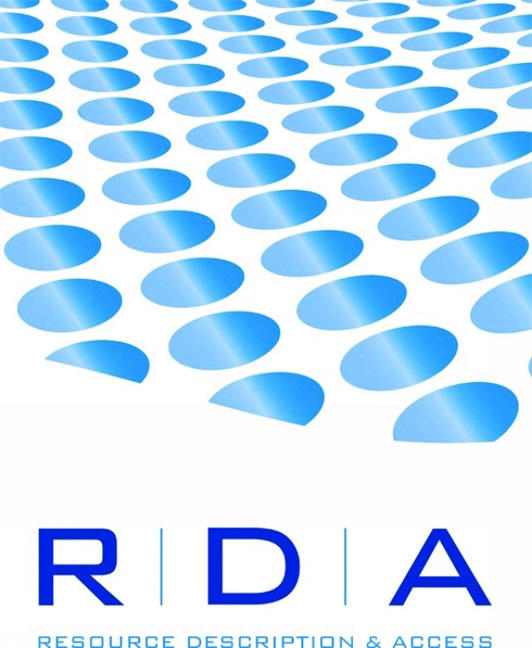Book contents
- Frontmatter
- Content Development for RDA: Resource Description and Access
- Preface to the 2013 Revision
- Contents
- 0 Introduction
- SECTION 1 RECORDING ATTRIBUTES OF MANIFESTATION AND ITEM
- SECTION 2 RECORDING ATTRIBUTES OF WORK AND EXPRESSION
- SECTION 3 RECORDING ATTRIBUTES OF PERSON, FAMILY, AND CORPORATE BODY
- SECTION 4 RECORDING ATTRIBUTES OF CONCEPT, OBJECT, EVENT, AND PLACE
- SECTION 5 RECORDING PRIMARY RELATIONSHIPS BETWEEN WORK, EXPRESSION, MANIFESTATION, AND ITEM
- SECTION 6 RECORDING RELATIONSHIPS TO PERSONS, FAMILIES, AND CORPORATE BODIES
- SECTION 7 RECORDING RELATIONSHIPS TO CONCEPTS, OBJECTS, EVENTS, AND PLACES
- SECTION 8 RECORDING RELATIONSHIPS BETWEEN WORKS, EXPRESSIONS, MANIFESTATIONS, AND ITEMS
- SECTION 9 RECORDING RELATIONSHIPS BETWEEN PERSONS, FAMILIES, AND CORPORATE BODIES
- SECTION 10 RECORDING RELATIONSHIPS BETWEEN CONCEPTS, OBJECTS, EVENTS, AND PLACES
- Appendices
- Glossary
- Index
0 - Introduction
Published online by Cambridge University Press: 08 June 2018
- Frontmatter
- Content Development for RDA: Resource Description and Access
- Preface to the 2013 Revision
- Contents
- 0 Introduction
- SECTION 1 RECORDING ATTRIBUTES OF MANIFESTATION AND ITEM
- SECTION 2 RECORDING ATTRIBUTES OF WORK AND EXPRESSION
- SECTION 3 RECORDING ATTRIBUTES OF PERSON, FAMILY, AND CORPORATE BODY
- SECTION 4 RECORDING ATTRIBUTES OF CONCEPT, OBJECT, EVENT, AND PLACE
- SECTION 5 RECORDING PRIMARY RELATIONSHIPS BETWEEN WORK, EXPRESSION, MANIFESTATION, AND ITEM
- SECTION 6 RECORDING RELATIONSHIPS TO PERSONS, FAMILIES, AND CORPORATE BODIES
- SECTION 7 RECORDING RELATIONSHIPS TO CONCEPTS, OBJECTS, EVENTS, AND PLACES
- SECTION 8 RECORDING RELATIONSHIPS BETWEEN WORKS, EXPRESSIONS, MANIFESTATIONS, AND ITEMS
- SECTION 9 RECORDING RELATIONSHIPS BETWEEN PERSONS, FAMILIES, AND CORPORATE BODIES
- SECTION 10 RECORDING RELATIONSHIPS BETWEEN CONCEPTS, OBJECTS, EVENTS, AND PLACES
- Appendices
- Glossary
- Index
Summary
0.0 Purpose and Scope
RDA provides a set of guidelines and instructions on recording data to support resource discovery.
The data created using RDA to describe a resource are designed to assist users performing the following tasks:
find—i.e., to find resources that correspond to the user's stated search criteria
identify—i.e., to confirm that the resource described corresponds to the resource sought, or to distinguish between two or more resources with similar characteristics
select—i.e., to select a resource that is appropriate to the user's needs obtain—i.e., to acquire or access the resource described.
The data created using RDA to describe an entity associated with a resource (a person, family, corporate body, concept, etc.) are designed to assist users performing the following tasks:
find—i.e., to find information on that entity and on resources associated with the entity
identify—i.e., to confirm that the entity described corresponds to the entity sought, or to distinguish between two or more entities with similar names, etc.
clarify—i.e., to clarify the relationship between two or more such entities, or to clarify the relationship between the entity described and a name by which that entity is known
understand—i.e., to understand why a particular name or title, or form of name or title, has been chosen as the preferred name or title for the entity.
RDA provides a comprehensive set of guidelines and instructions covering all types of content and media.
Based on the user tasks defined in IFLA Study Group on the Functional Requirements for Bibliographic Records, Functional Requirements for Bibliographic Records: Final Report (München: K.G. Saur, 1998), 82. Available online at: http://archive.ifla.org/VII/s13/frbr/frbr.pdf.
Based on the user tasks defined in IFLA Working Group on Functional Requirements and Numbering of
Authority Records (FRANAR), Functional Requirements for Authority Data: A Conceptual Model, edited by Glenn E. Patton (München: K.G. Saur, 2009).
0.1 Key Features
RDA provides a flexible and extensible framework for the description of resources produced and disseminated using digital technologies while also serving the needs of agencies organizing resources produced in non-digital formats.
RDA is designed to take advantage of the efficiencies and flexibility in data capture, storage, retrieval, and display made possible with new database technologies. RDA is also designed to be compatible with the legacy technologies still used in many resource discovery applications.
Information
- Type
- Chapter
- Information
- RDA: Resource, Description and Access, 2013 Revision , pp. 1 - 16Publisher: FacetPrint publication year: 2013
